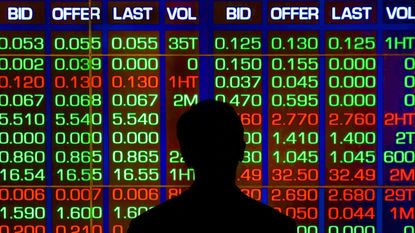Federal government shutdowns aren’t necessarily all that bearish for stocks, at least historically speaking.
Although the market hates the threat of a federal government shutdown – an outcome that looks increasingly likely beginning October 1 – the S&P 500’s performance during actual shutdowns has been pretty good.
If our current go-round with a shutdown seems particularly unwelcome, it’s probably because of its especially poor timing. The remarkable rally of 2023 lost steam a couple of months ago amid mounting anxieties over everything from interest rates and bond yields to rising oil prices and the outlook for global growth. The S&P 500 is still up more than 11% on a price basis so far this year, but sentiment has shifted since the benchmark index hit its 2023 peak at the end of July.
Subscribe to Kiplinger’s Personal Finance Be a smarter, better informed investor.
Save up to 74%
Sign up for Kiplinger’s Free E-Newsletters Profit and prosper with the best of expert advice on investing, taxes, retirement, personal finance and more – straight to your e-mail.
Profit and prosper with the best of expert advice – straight to your e-mail.
Indeed, the S&P 500 is down about 7% since then, with fears of a government shutdown weighing on the index as we approach Washington’s weekend deadline.
Throwing a potential government shutdown into the mix when markets were already struggling during the seasonally weakest month of the year for equities is less than ideal. Whether stocks can get back on track for a fourth-quarter push very much remains to be seen. A government shutdown certainly can’t help matters, the thinking goes.
Stock performance during government shutdownsHappily, for market participants, the historical record for stocks when the federal government shuts down is far from one of doom and gloom.
There have been 21 government shutdowns since 1976, but on only four occasions were operations affected for more than one business day, writes Jeffrey Buchbinder, chief equity strategist at LPL Financial. That leaves us with only four “true” shutdowns, Buchbinder notes, the last occurring in late 2018 into early 2019.
It’s tough to remember now, but the S&P 500 returned 10.3% during the 35-day shutdown of 2018-2019. Stocks did fine during the extended shutdown of October 2013 too.
“Historically, markets were not materially impacted by a shutdown,” Buchbinder says. “For example, in 2013, the House and Senate were in a standoff over funding for the so-called Affordable Care Act and the government was shut down for 16 days during the first part of October. The S&P 500 had some down days but overall, the equity market took all the political drama in stride with a 3.1% advance during those 16 days.”
It’s sort of counterintuitive, but during the 21 government shutdowns, the S&P 500 rose 55% of the time, generating an average return of 0.3%, according to data from Carson Group. Even better, 12 months after the end of the shutdown, the S&P 500 was higher 86% of the time, with an average return of 12.7%.
Past performance is no guarantee of future results, but the record for stocks in government shutdowns is almost encouraging. When the last federal government shutdown ended in 2019, the S&P 500 went on to return almost 24% over the next 12 months. There are probably plenty of market participants who would take that deal again.
Related ContentHow Social Security Would Be Affected By A Government ShutdownWhat A Government Shutdown Means For Student Loan PaymentsA Government Shutdown Could Disrupt Your Travel Plans — EventuallyHow Medicare Would Be Affected By A Government Shutdown
